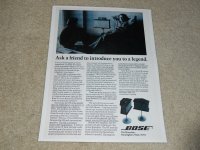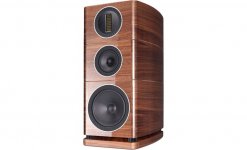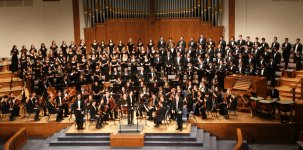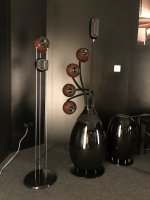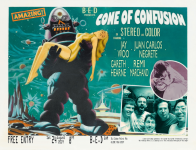Yeah, if it’s light, then the inside of that sphere locations would be like a disaster accident at a tanning bed or like the magnifying glass on the ants if you’re a naughty kid.
What if you went this year and put it on the transmission line as an offset stub because that does something similar in light as well if you stack a single polarized lens clocked at 45° it’s tinted stack another it goes dark stick a third and it’s all the way back to Bright Clear?
I don’t know if it seems like a sphere is the same concept as crazy as a mirror? But already what the heck happens on the interior for sound as light It is interesting
What if you went this year and put it on the transmission line as an offset stub because that does something similar in light as well if you stack a single polarized lens clocked at 45° it’s tinted stack another it goes dark stick a third and it’s all the way back to Bright Clear?
I don’t know if it seems like a sphere is the same concept as crazy as a mirror? But already what the heck happens on the interior for sound as light It is interesting
What does intensity tell you, that it's a focal point? Isn't it a good place for a modal source?
Hey, what about a bandpass box with the driver inside, a closed box inside and mass loaded transmission line leading to the outside?
Hey, what about a bandpass box with the driver inside, a closed box inside and mass loaded transmission line leading to the outside?
I didn’thace the right video but a couple of this guys videos show the shapes but then how they line up perfectly to create a flat wave front and then collide as a complete cancellation you’re about and returned from the sides
The video graphic in post #59 assumes the wavelength is very much less than the size of the parabolic reflectors.
We have to be careful with wave-tank simulations and small wavelengths. It is easy to draw faulty conclusions if the wavelength of the sim is not kept reasonable.
As one close in on a ideal pulsating sphere with 360 deg even radiation, the room will not have a lot of impact due to the averaging of all evenly spread energy. So I'm nor sure its correct to say that a omni speaker is more room dependent. I think the ordinary box speaker has the biggest problem actually. I really narrow directivity speaker could avoid some of the room reflections...You can only place so many drivers in a sphere as too many holes reduce structural integrity and also the strength advantages that reduce resonance. If all these smaller drivers are "full range" then you've got mids and highs shooting around all over the place making the speaker more dependent on room acoustics.
//
It depends on the size of the sphere and the tweeter/faceplate and how you make the cut. But a tweeter cut so its faceplate is contiguous with a sphere avoids diffraction.
Back in the day (late 60s) the Bose 901 was developed to be as we know the "direct/reflecting" sound source to give you a degree of direct sound but 8 of the 9 drivers fired from the rear of the enclosure (a 5-sided shape) to provide a more spatial effect. This of course goes well beyond (in terms of room reflections) the increased spatial effect of a spherical enclosure (i.e. reduction of diffraction) with drivers mounted front facing. The idea then was to increase the soundstage. Attached a 901 ad from the seventies. While these IMO sounded nice, the room would have a major impact. Example, if you had a large tapestry handing on your wall behind the speakers, it would soften the reflections (absorption) vs. the difference a typical sheetrock wall might make vs. large glass windows in the wall vs. a tongue and groove wood wall, etc. In some rooms the 901 might be terrific and others not so much. While the 901 touted "FR" drivers, it needed EQ to squeeze out more highs while nine 4 1/2"ers will move some air to produce decent bass.
All speakers have soundwaves that bounce around internally in some fashion, the key question is how and how much do they resonate the enclosure itself? The sphere is one piece while all other enclosures have joined individual panels of some kind. Of course enclosure material and dampening is important but all other things equal, it is harder to make a sphere audibly resonate due to its inherent strength.
All speakers have soundwaves that bounce around internally in some fashion, the key question is how and how much do they resonate the enclosure itself? The sphere is one piece while all other enclosures have joined individual panels of some kind. Of course enclosure material and dampening is important but all other things equal, it is harder to make a sphere audibly resonate due to its inherent strength.
Attachments
I don’t have a favorite, I can’t seem to figure that one out?? … but my home speakers : Main living room TV etc. are dayton audio RS 180 paper and RS fabric dome tweeters in . Offset driver entry tL . It’s kind of just like the samba kit that parts express sells the crossover might even almost be the same. Switched around Tweeter for a while With the hivi ribbon every now and then somebody younger says it’s too much again…
Subs are RSS 265hofour in offset driver tapped pipes as well.
Scattered elsewhere in bedroom or shop/shed is kind of the same thing with the RS 100 or 125 and ABS plastic pipe offset driver stuffed TL’s and the tangband w5 In a variety of different tapped pipe or similar.
But everything else is just trying to figure this stuff out higher orders or this connection is absolutely repeated in a variety of different ways of expressing the same numbers associate with the speed of light circle and types of pie and using everythingFrom the B &C 18 DS1115 to the ultiMax 18 or even some 12 inch car audio drivers that have this amazing motor force despite being super cheap. And the best lab rat of all the Dayton audio TCP 115 .
Last edited by a moderator:
Can you post a couple of pics?
Meanwhile mine are posted at the Ikea Hack site, no one from what I can see has ever done this with 4 spheres:
https://ikeahackers.net/2022/06/spherical-speakers-ikea-bowl-hack.html
Meanwhile mine are posted at the Ikea Hack site, no one from what I can see has ever done this with 4 spheres:
https://ikeahackers.net/2022/06/spherical-speakers-ikea-bowl-hack.html
Centre-to-centre distances are far to large for this to be anywhere near ultimate.ULTIMATE SPHERICAL SPEAKERS
I would work to get everything as close together as possible. The spheres should be merging into each other not spaced out like a cheap hollywood movie robot.
dave
Depends on the distance you sit from them. Of course if you're just 10 feet away that makes a difference but less so as you are farther.
Here's a Wharferdale Elysian 2 (for $3,500 each from Crutchfield). Not a junky speaker. The center to center on my system between woofer and dome mid is 10" - 11", this on the Wharferdale is actually more at about 12" or so. This Wharf. is about 28" high and a nice example of a traditional box speaker. So maybe email them? 🙂
Bear in mind from a practical standpoint (for DIY) merging spheres becomes very difficult woodworking so easy to say. Connecting them is hard. Plus I am not a huge fan of point source anyway, as a real orchestra may not hardly be point source anyway with many instruments across a big soundstage. So suppose one instrument player is actually a few feet above another (see attached as an example) depending on the configuration of the stage, and you've got those expensive front section tickets, you're not receiving point source at your ears. With spheres, where the speakers tend to disappear (far less diffraction) the sound blends better anyway.
The cheap "robots" cost about $1,200 to build for materials.
Here's a Wharferdale Elysian 2 (for $3,500 each from Crutchfield). Not a junky speaker. The center to center on my system between woofer and dome mid is 10" - 11", this on the Wharferdale is actually more at about 12" or so. This Wharf. is about 28" high and a nice example of a traditional box speaker. So maybe email them? 🙂
Bear in mind from a practical standpoint (for DIY) merging spheres becomes very difficult woodworking so easy to say. Connecting them is hard. Plus I am not a huge fan of point source anyway, as a real orchestra may not hardly be point source anyway with many instruments across a big soundstage. So suppose one instrument player is actually a few feet above another (see attached as an example) depending on the configuration of the stage, and you've got those expensive front section tickets, you're not receiving point source at your ears. With spheres, where the speakers tend to disappear (far less diffraction) the sound blends better anyway.
The cheap "robots" cost about $1,200 to build for materials.
Attachments
Well, somehow that orchestra is squeezed into point sensors (the mics) so it actually makes sense to reproduce them by point sources. If you think about the whole recording / reproduction chain, it should (I think) mimic a mirror somehow...
Your idea is 100 mics and a 100 speakers?
//
Your idea is 100 mics and a 100 speakers?
//
Who you calling CHEAP??The spheres should be merging into each other not spaced out like a cheap hollywood movie robot.
In the entertainment industry it's wise to give the paying customer what he asks for.
Attachments
I am 14 feet or more out and i still feel drivers not within a quarter wavelength as too far apart. Your spacing will considerably reduce the size of the sweet spot.Depends on the distance you sit from them. Of course if you're just 10 feet away that makes a difference but less so as you are farther.
Wharferdale Elysian 2
Not one i would even consider. Looks designed by the marketing department. Being a commercial loudspeaker does not speak to how well they are designed, icould quickly name a couple brands i think are “cracked” but still seem popular.
Why live with a known flaw when it could easily be reduced in magnitude.
dave
You mean by one speaker/stereo pair?to reproduce them by point sources
If you are only interested in making money. We here i think are more interested in better loudspeakers, not better selling loudspeakers (except when they bring something we can “borrow”.Who you calling CHEAP??
In the entertainment industry it's wise to give the paying customer what he asks for.
dave
Your ears actually place the orchestra into more than two point sources - you hear broadly left and right and up and down. And multiple mics can be used in different sections, the mixing of course brings it into two channels. Speakers with broader soundstage can recreate some of that expansiveness.
Yes actually the only totally true reproduction would be a speaker sitting on each chair of an orchestra, suited to that freq. range and a single recording for each instrument. Of we can't do that (well Jeff Bezos or Elon Musk could 🙂 so we whittle down to what we can practically do and afford. My reply was simply to the claim that the drivers were too far apart, yet many well respected brands (just showed one by example) have spacing between their drivers and aren't jammed together as close as possible.
Now that Copra is WAY cool! What a conversation piece and bet it sounds very spacious. Actually it's instructive to listen to the designer, he has some very interesting ideas.
To the comment about better loudspeakers, I think just about everything that can be done with say 3 drivers in a box like enclosure has been done by manufacturers over the past 50 years or so. The AR 3a was considered a reference standard back in the day, and even today it ain't bad. The drivers are better today of course, but innovative ways of using them can result in improvements other than seeking the flattest response ever.
So this guy really "thinks outside the box".
Yes actually the only totally true reproduction would be a speaker sitting on each chair of an orchestra, suited to that freq. range and a single recording for each instrument. Of we can't do that (well Jeff Bezos or Elon Musk could 🙂 so we whittle down to what we can practically do and afford. My reply was simply to the claim that the drivers were too far apart, yet many well respected brands (just showed one by example) have spacing between their drivers and aren't jammed together as close as possible.
Now that Copra is WAY cool! What a conversation piece and bet it sounds very spacious. Actually it's instructive to listen to the designer, he has some very interesting ideas.
To the comment about better loudspeakers, I think just about everything that can be done with say 3 drivers in a box like enclosure has been done by manufacturers over the past 50 years or so. The AR 3a was considered a reference standard back in the day, and even today it ain't bad. The drivers are better today of course, but innovative ways of using them can result in improvements other than seeking the flattest response ever.
So this guy really "thinks outside the box".
Last edited:
Not one speaker but a stereo pair. But then, stereo is most probable not the end game.You mean by one speaker/stereo pair?
//
- Home
- Loudspeakers
- Multi-Way
- How to build a spherical speaker?
